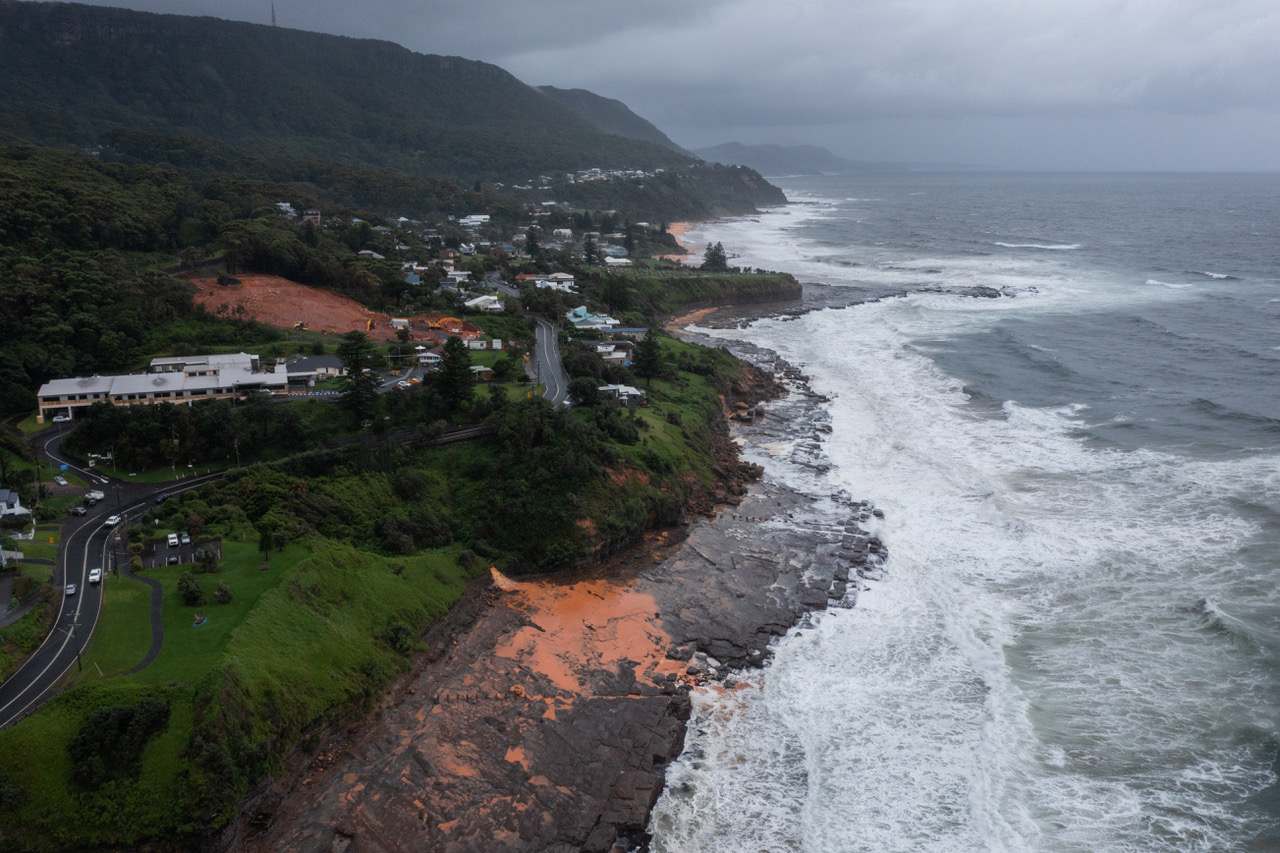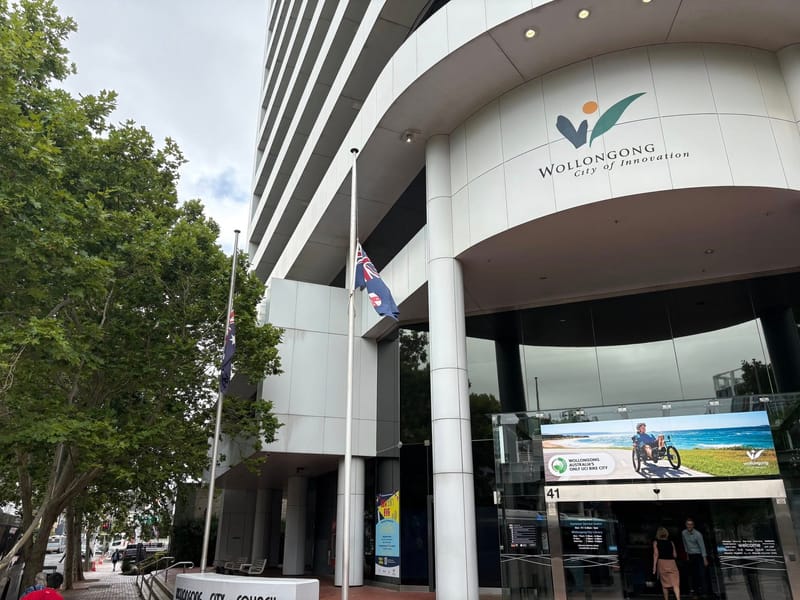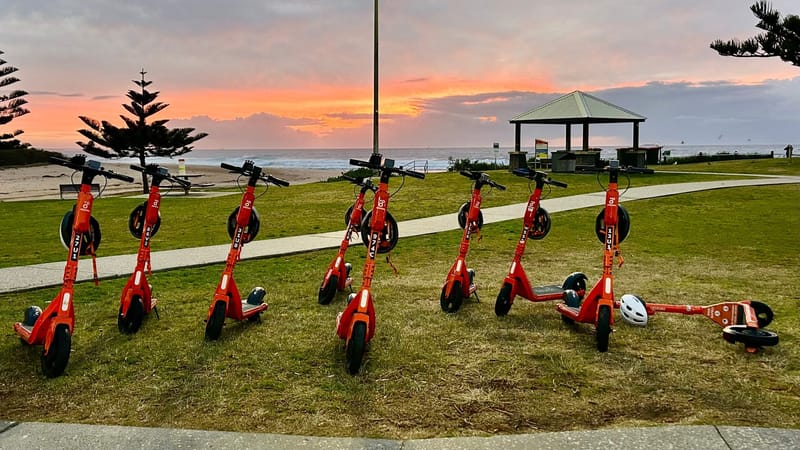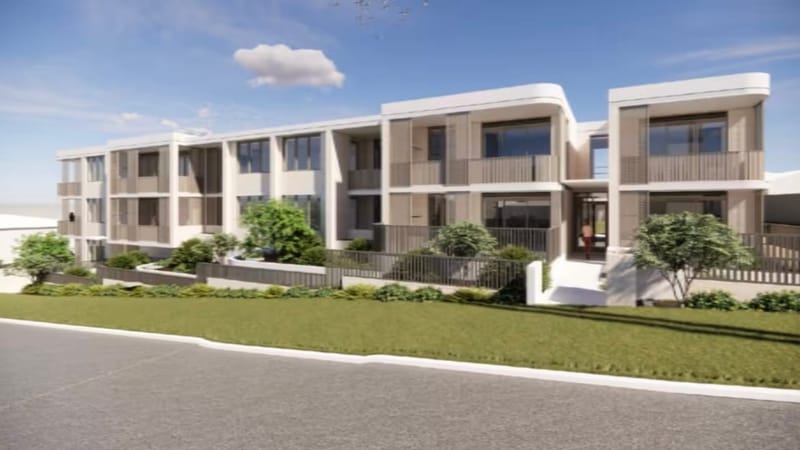‘Like a red waterfall’
If you're driving north along Lawrence Hargrave Drive, just past Coledale hospital you'll see on the left a haphazard-looking development site on steeply sloping land overlooking the ocean. Orange and black plastic sheets are scattered over much of...

If you're driving north along Lawrence Hargrave Drive, just past Coledale hospital you'll see on the left a haphazard-looking development site on steeply sloping land overlooking the ocean. Orange and black plastic sheets are scattered over much of the denuded, muddy excavation. Hay bales, sandbags and barriers indicate attempts to control the red, sediment-filled water that, on most rainy days, still pours from the site, flooding the road, inundating neighbouring properties, flowing out across what was once a pristine rock shelf on its way to the ocean. It’s more than an eyesore, it’s an environmental disaster.
Two years ago, when residents first heard rumours that a development company, Wombarra Vista, had bought the block and intended to squeeze 16 home sites onto it, the proposal was greeted with disbelief. For decades this land had been zoned “Slippage. Never to be built on”. The Northern Illawarra Coast is notoriously unstable. In 1974, after a period of rain, a cottage immediately in front of this land collapsed when the ground beneath it slipped away. A few years after that, this part of Lawrence Hargrave Drive gave way and was closed for months. Even the nearby bus shelter has had to be replaced three times. Things around here keep sliding. Surely no council would give this ill-conceived idea the go-ahead.
But Wombarra Vista submitted a development application and, despite residents’ strenuous objections, “Seacliff Estate” got the green light. Fourteen building sites instead of sixteen being the only concession.
Within weeks, Wombarra Vista had bulldozed virtually the entire site, removing trees, boulders and thousands of tonnes of top soil, effectively creating a giant clay bowl that looks like a mini open cut mine.
But when the first rains came, residents discovered that the 400m3 sediment retention basin stipulated in the DA had not been created and the site’s only stormwater pipe which ran under the road and properties was damaged and had not been upgraded.
The first pollution event happened in late December. After only 30 mm of rain the undersized drainpipe couldn’t cope. Clay slurry flowed from the site like a red waterfall, across the road, through properties, polluting the rock-shelves and creating giant plumes in the ocean that stretched for kilometres.
When a serious pollution event like this happens, who do you call? Around here it’s Wollongong City Council, the Environmental Protection Authority or the Member for Heathcote. Each of them swatted residents’ concerns away. Each shifted the blame, claimed someone else was responsible.
In their distress, residents felt abandoned. And the pollution events continued. Still not one official body acted. Twenty-six separate events have been recorded to date.
Locals realised they were on their own. They were pensioners, students, renters, owners. They pooled their skills. They went out into rain storms to document each pollution event. Someone knew someone with a drone. Because no official authority was interested in testing the run-off, they learned how to do it themselves. Run-off from the site was 200 times the legal limit for suspended solids. They consulted water scientists, who warned that, without urgent action, this sediment would blanket the aquatic habitat, smother plants and animals and clog the gills of fish.
Only when the media picked up on the story and dramatic drone images of the ongoing pollution events began to appear in the papers, on the news and radio, was there some action. Politicians and officials began to visit. Council officers promised stricter compliance but because of State Government restrictions, they could only issue small fines.
And as we write this, nearly three months on from the first pollution event, the site has flooded once again. Right now, unfiltered, sediment-filled run-off is being deliberately pumped out over the rock shelf and into the ocean. Once again, massive orange plumes stretch for kilometres.
So the battle continues. This won’t be the last development on this unique and fragile part of the coast. Others are certainly in the pipeline. Many residents around here now have little faith in the very institutions that were put in place to protect them. But next time - and there will surely be a next time – they won’t so readily accept the easy assurances that they are given nor the excuses for inaction.
FOLLOW THIS STORY: For more news, including responses from Council and State Government departments, plus residents' photos and drone footage, see the Flame's Wombarra timeline.





